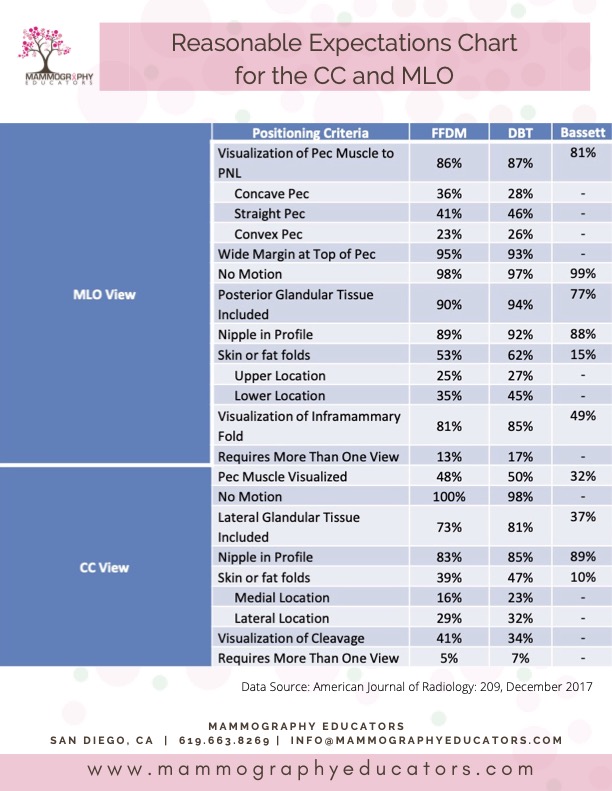How many times should you see the pectoralis (pec) muscle on the CC view? Should you get the inframammary fold (IMF) 100% of the time? How do you know if you are close to seeing all the major criteria on your images, as defined by ACR (which is different from the criteria for ACR Accreditation)?
A study was published in the Americal Journal of Roentgenology (a major, highly respected medical journal) in December 2017 which established these standards. We created the "Reasonable Expectations Chart", as shown below with the published data. You can compare your personal numbers to what is achievable, once you are using the most updated, standardized positioning techniques. If you "fall short", you can access many articles that are published on our website to help you improve those specific imaging benchmarks.
Here's how to determine YOUR numbers... Draw a line down the middle of a piece of paper to make two columns. At the top, write "YES" above one column and "NO" above the other. Now let's say you are measuring how often you see pec muscle on the CC view. Do at least 50 mammograms (100 CCs, plus or minus, due to unilateral exams). Every time you see pec muscle, put a tally mark in the YES column and if you don't see pec, put a tally mark under NO. Once you have evaluated 100 CC views, you should have at least 40 tally marks (40%) in the YES column. The "Reasonable Expectation" is 51% on digital breast tomosynthesis (DBT), per the study.
I think there can be a variability of up to 20-30%, due to patient body habitus and other challenges, so that can be factored in as well. However, if you have below 40%, you can use our resources to increase your numbers!! You can do this for each category listed on the chart. We hope this information will help you reach your goal of improving image quality!


